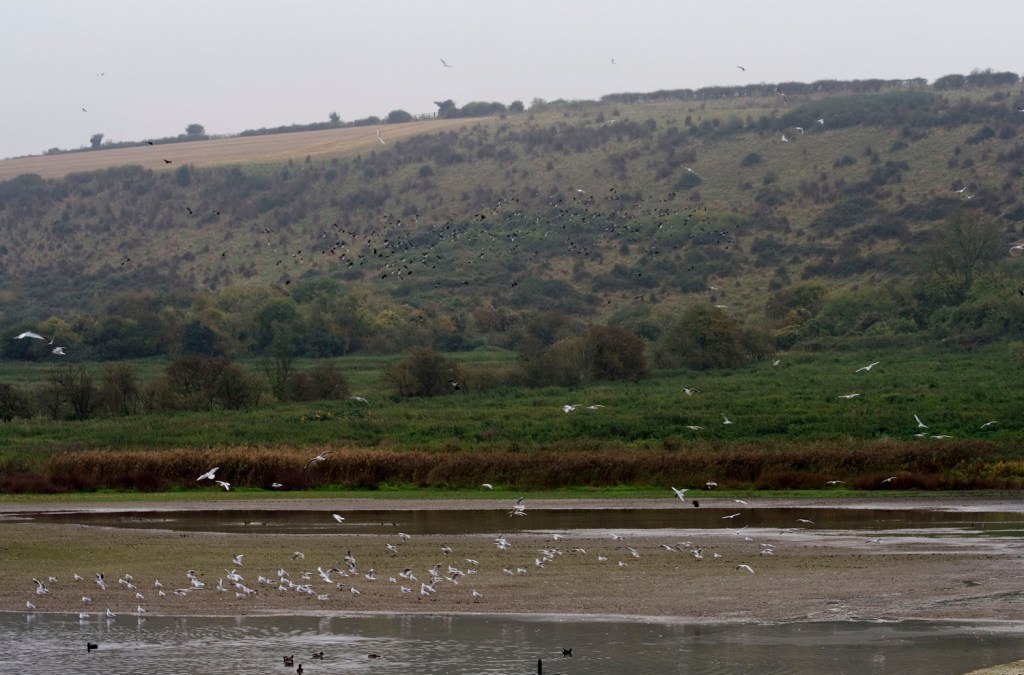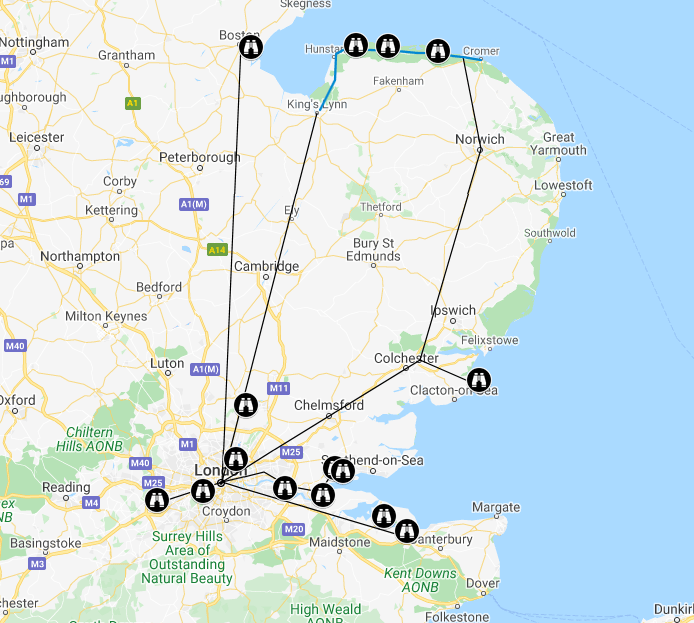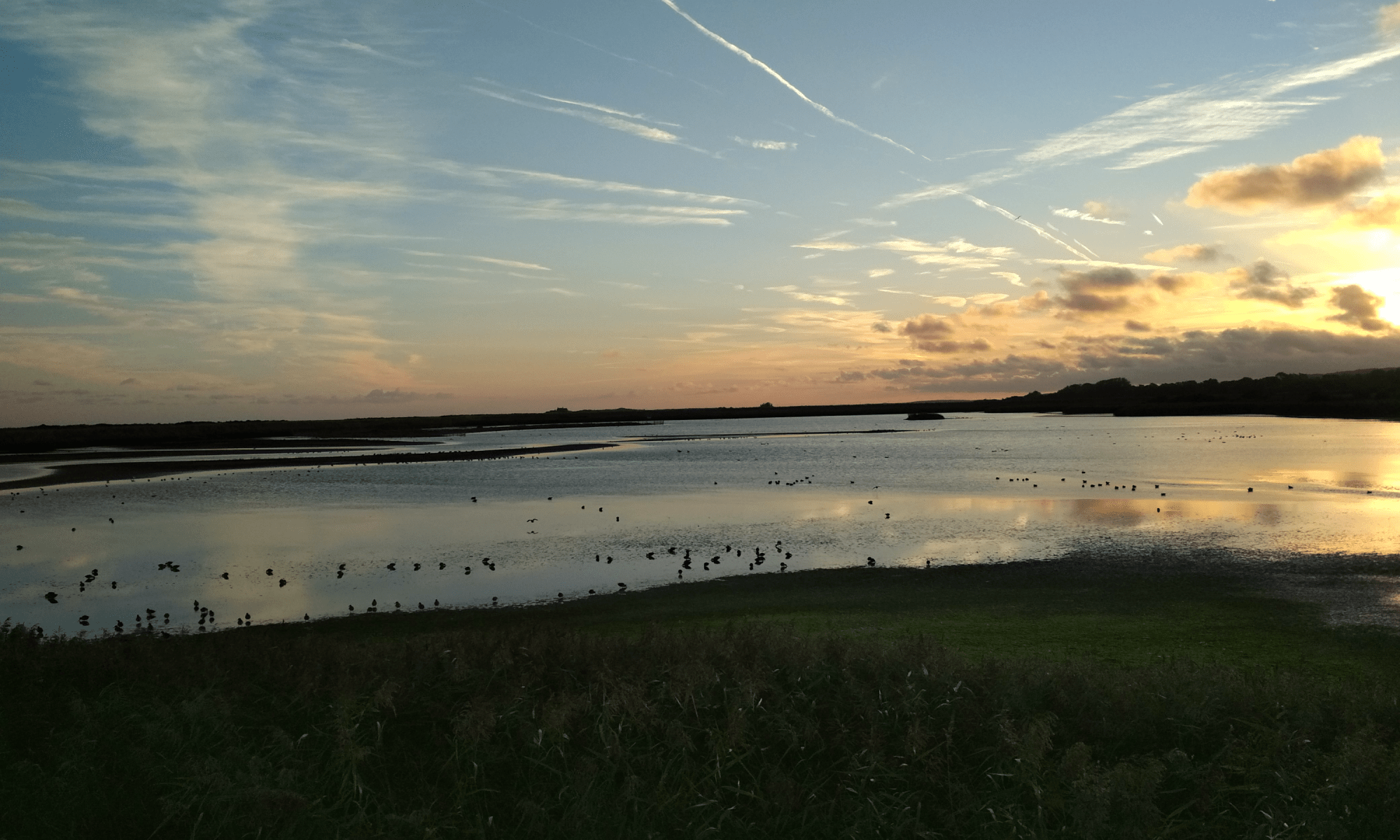By Tom Jordan
The idea of the car as the default mode of transport is embedded in modern society and birding is no exception. Can this culture be changed? By questioning our defaults, many birders will be surprised at what can be achieved.
Apart from birding, my other great love is Southampton Football Club. As a child, my Saturdays took on a near-military regime—a swimming lesson at 8.45, football training at 10.30, home for a bath and a fry up brunch, and then at 1.15pm my dad and I would get into the car and head to the game. Normally the twelve mile journey into the centre of Southampton from my home town of Winchester takes about 25 minutes, but with the guarantee of a traffic jam followed by a tour of city centre car parks in search of a space, we needed that time to make the 3pm kick off. The traffic would be even worse after the game and we would rarely get home until well into ‘606’—the BBC’s football radio show that begins at, well, 6.06pm.
At some point in the last fifteen years or so, that routine changed. I can’t remember exactly when or even why, but one day we took the train. We liked it, so we did it again and we’ve done it ever since. Now on every journey we wonder why we ever went by car. Our new routine is quicker (by about 40%), cheaper (by about 10%), healthier (there’s three times as much walking) and generally more pleasant, with an almost guaranteed Peregrine sighting. None of these underlying factors changed—the only thing that changed was that we shifted our default from the car to public transport.
The idea of the car as default is embedded in modern society and birding is no exception. Like many young birders my first few years involved a heavy reliance on my parents generously driving me around Hampshire and neighbouring counties, plus regular minibus trips with my local RSPB youth group. I didn’t know it could be any different—after all, look at any birding site guide and you will find detailed directions on how to drive there and where to park, but you’ll be lucky to get a single line on getting there by public transport. Can this culture be changed?
One of the most common objections to the low-carbon birding movement is that reducing our carbon footprint will deprive us of the best birding experiences and reduce our chances of seeing many exciting species. To quote one critic, low-carbon birding means “limited birding, never see a wader birding, boring birding.” As an inland patch watcher who’s spent hundreds of hours at Winchester Sewage Farm waiting for any wader to drop in, this is something I can certainly empathise with. However, to me it presents something of a false dichotomy—namely that lower-carbon birding can only mean local birding. Public transport may not be perfect but I think many birders will be surprised at what is possible if they question the car as default. The environmental arguments have been made by many, but in my view there are more benefits beyond that.

My exploration of birding by public transport began when I moved to London to study. In London, where few inner city residents own cars, birding by public transport is the default and the capital’s best birding sites—Rainham Marshes, Walthamstow Wetlands, the London Wetland Centre and Staines Reservoirs—are all straightforward to access by public transport. Once you head beyond the M25, much of the north Kent coast can be easily reached by train, including hotspots such as Oare Marshes and Elmley NNR. The same is true along the Essex coast where one can visit various sites on Thames Estuary and further north. There are many other sites in the South East, such as Pulborough Brooks and Rye Harbour, which I haven’t yet attempted but know can be reached by train from London in ninety minutes or less. Add a bicycle into the mix and there are very few sites across the region which are not a realistic day trip from London. Back in my home county of Hampshire I’ve realised that key sites such as the Lymington-Keyhaven reserve and Farlington Marshes, which I used to visit only by car, can also be accessed by public transport with journey times and costs that compare favourably to driving.

North Norfolk is probably my favourite area for birding in the UK and in recent years I’ve visited the region regularly by public transport. The Coasthopper Bus service works particularly well as you can get off the bus at one place, spend the day walking along the coast and then get back on the bus elsewhere rather than having to retrace your steps. I typically visit for a couple of days at a time, staying in one of the various youth hostels along the coast, but in early October this year I attempted my first day trip from London. Leaving Kings Cross just before 6am, I arrived at Holkham at 10am and had probably my best ever day of UK birding, reaching 100 species by the end of the day amid a memorable fall of migrants. There are a lot of misconceptions about the cost of public transport, so for the sake of transparency, I spent £17 on the train to Kings Lynn (booked only two days in advance) and £9 on the bus along the coast. I didn’t pay to park (which would have cost £9), didn’t pay for petrol or car hire and I didn’t have to end my walk where I started or worry about the car park being locked at 6pm. Overall, I don’t think the majority of birders who visited by car had any advantage over me.

Another variation of the argument against low-carbon birding has been that its advocates are often those lucky enough to live in nature-rich areas, telling those in nature-impoverished areas to lower their carbon footprint, and that this will, to quote a critic, “make birding more boring for the already disenfranchised masses.” To me this argument is almost upside down—if anything, promoting birding as an activity that can be done by public transport should be most beneficial to city dwellers, who are less likely to own a car but more likely to have access to good public transport services. The same is true of widening participation in birding, after all, those least represented in birding, particularly young people and ethnic minorities, are also most likely to be reliant on public transport. Far from low-carbon birding being an exclusive pursuit, I would argue it’s the image of birding as an activity for people with cars that can make it seem exclusive.

In the interests of balance, I’ll certainly acknowledge the limits of birding by public transport. The availability and quality of services does vary considerably across the country. Public transport may feel less safe for some people, particularly women, and the type of journeys I’ve done would be more challenging for birders with disabilities or reduced mobility. In birding terms it’s not always easy to get to sites early in the morning for activities like seawatching and it’s difficult to jump between multiple sites in a day, if that’s how you like to go birding. However, for those who prefer to spend a day at one site, with an emphasis on finding rather than twitching, birding by public transport can work well.
The idea that lower-carbon birding has to be more limited, more boring, more complicated or more expensive simply doesn’t match my experience, in fact it’s quite the opposite. Over the last few years I’ve found several rarities, seen lots more and generally enjoyed many great birding days, and I’ve still not put my feet on the pedals since the day I passed my driving test! The environmental arguments have been made by many, but there are many other benefits to public transport that have made it my default. So why not give it a go – you might find yourself asking why you ever took the car.


If you live somewhere with a good train/bus service, then birding by public transport is definitely a good option. I have seen over 200 species in that way, almost all on day trips from my home in south-west London, including twitching some real rarities. Undoubtedly I could have seen many more if I had really wanted to. Its not suitable for everyone – it does depend on where you live and your own mobility, and some places are, in practical terms, impossible without a car. I still do a fair proportion of my birdwatching by car, and I’m not suggesting anyone should give up using a car completely. But as part of your birding “mix”, I recommend it. It needs a slightly different mental approach – you have to appreciate the places and common birds you will see whilst travelling as well as the end destination. Generally, I find it more relaxing than driving!
You might not get a huge day/year/life list, but if you have realistic expectations, it works. If you keep lists, you can focus on your local or county list, rather than your British one. For example, the London area gets 200+ species a year, and many of these are at locations accessible by public transport.
Excellent article. I can’t drive and don’t feel that has limited my birding experiences (though my partner does drive and when we take holidays in remote rural areas we hire a car).
Juliet
http://craftygreenpoet.blogspot.com